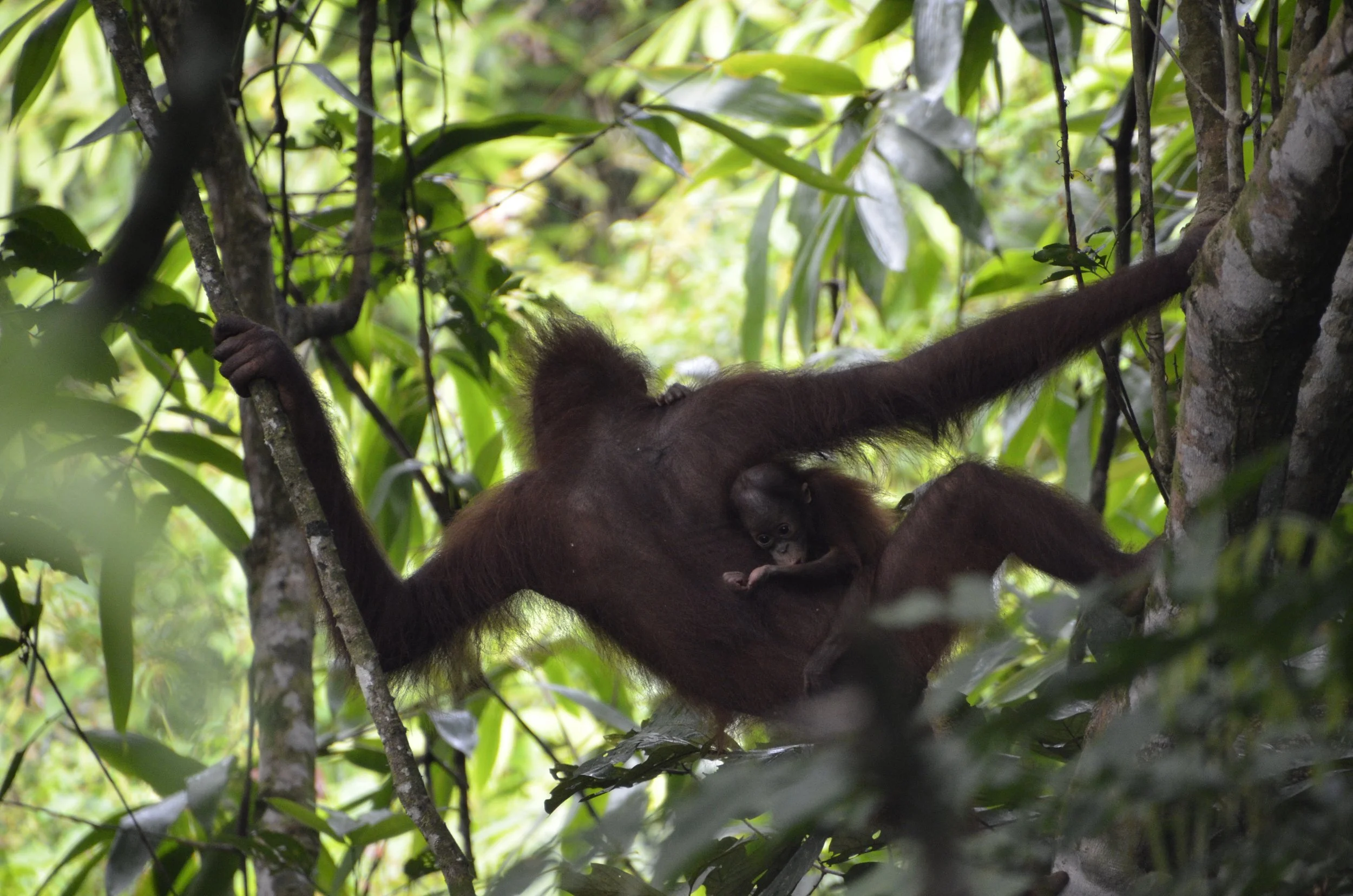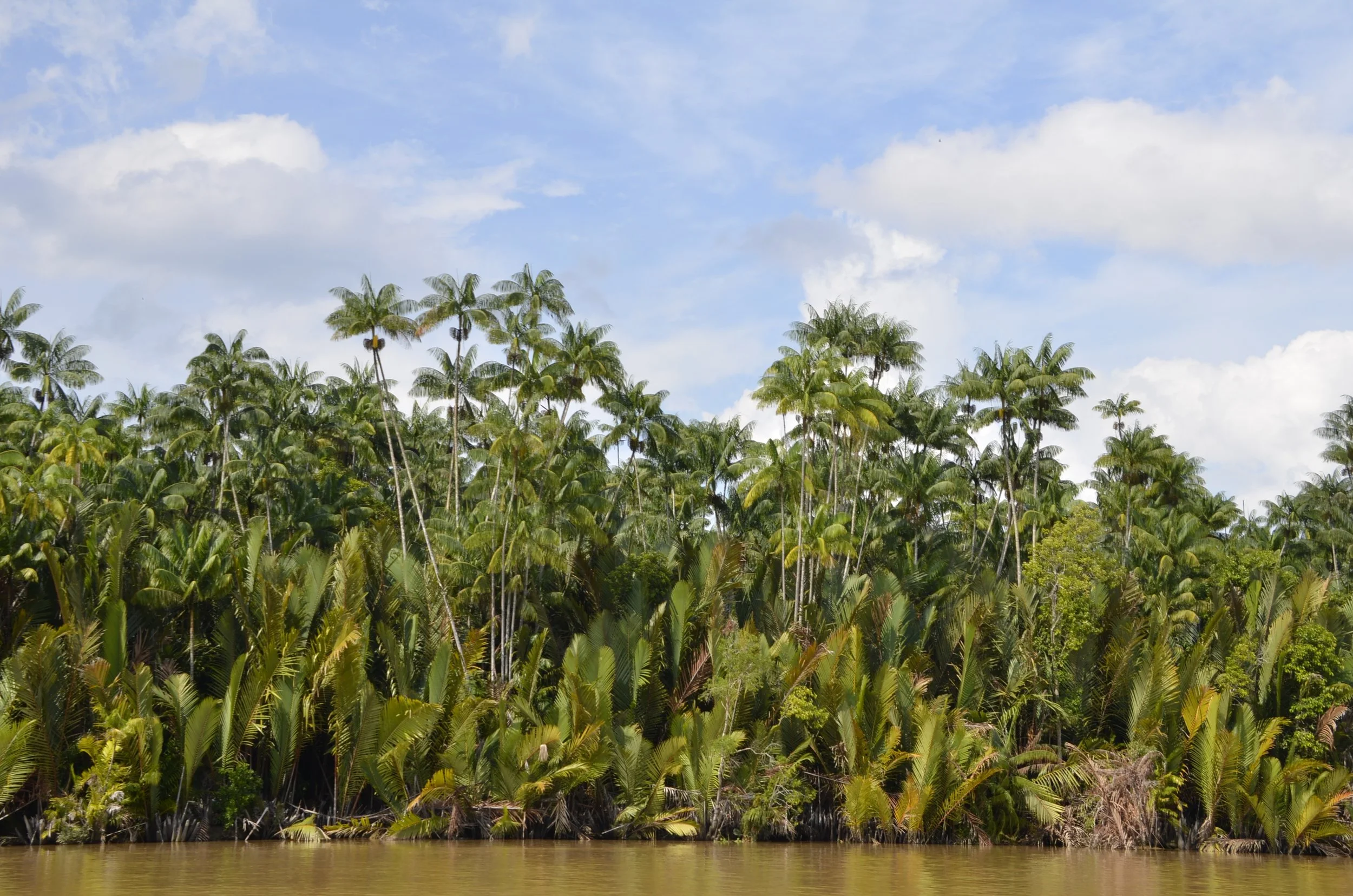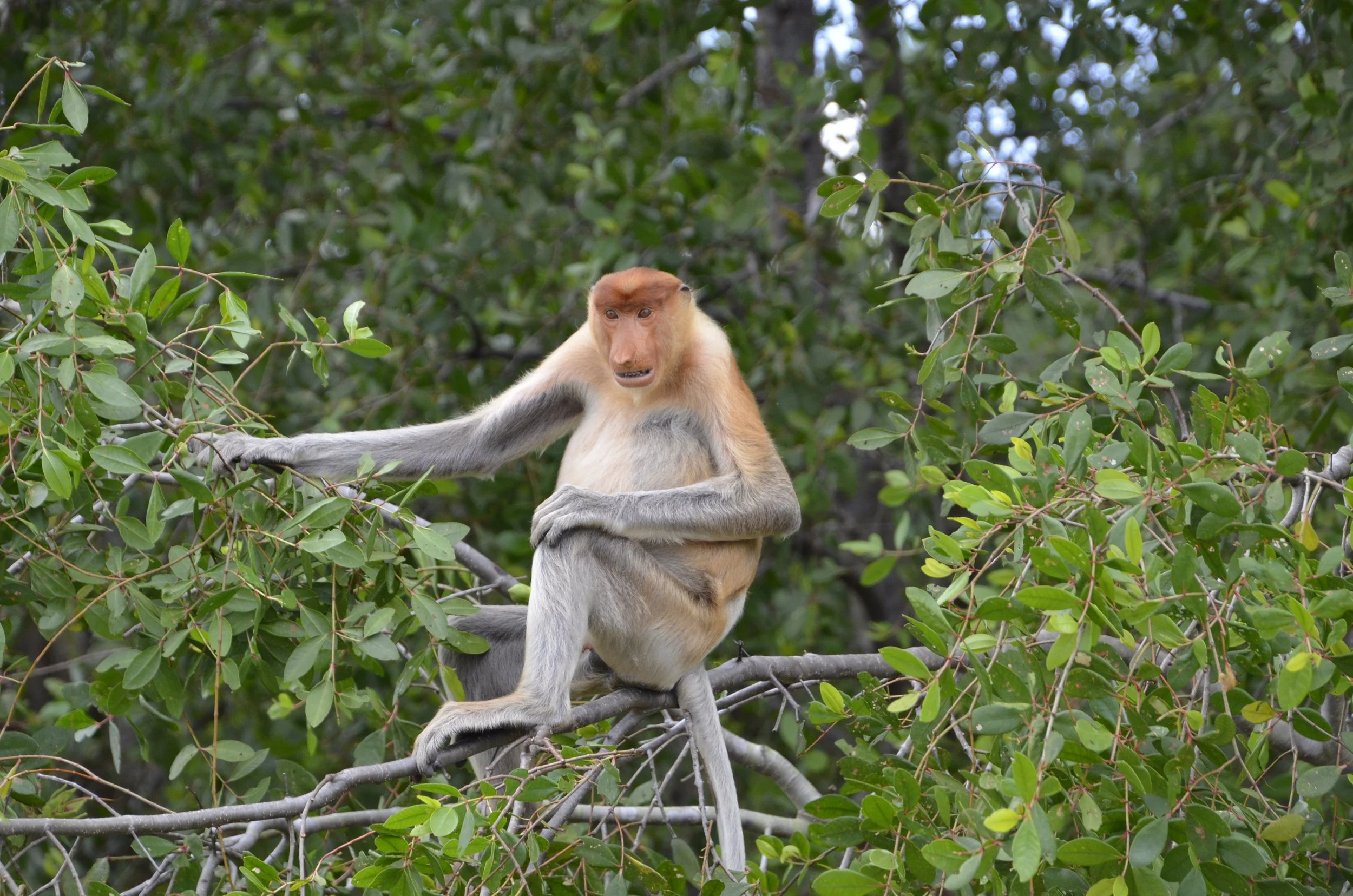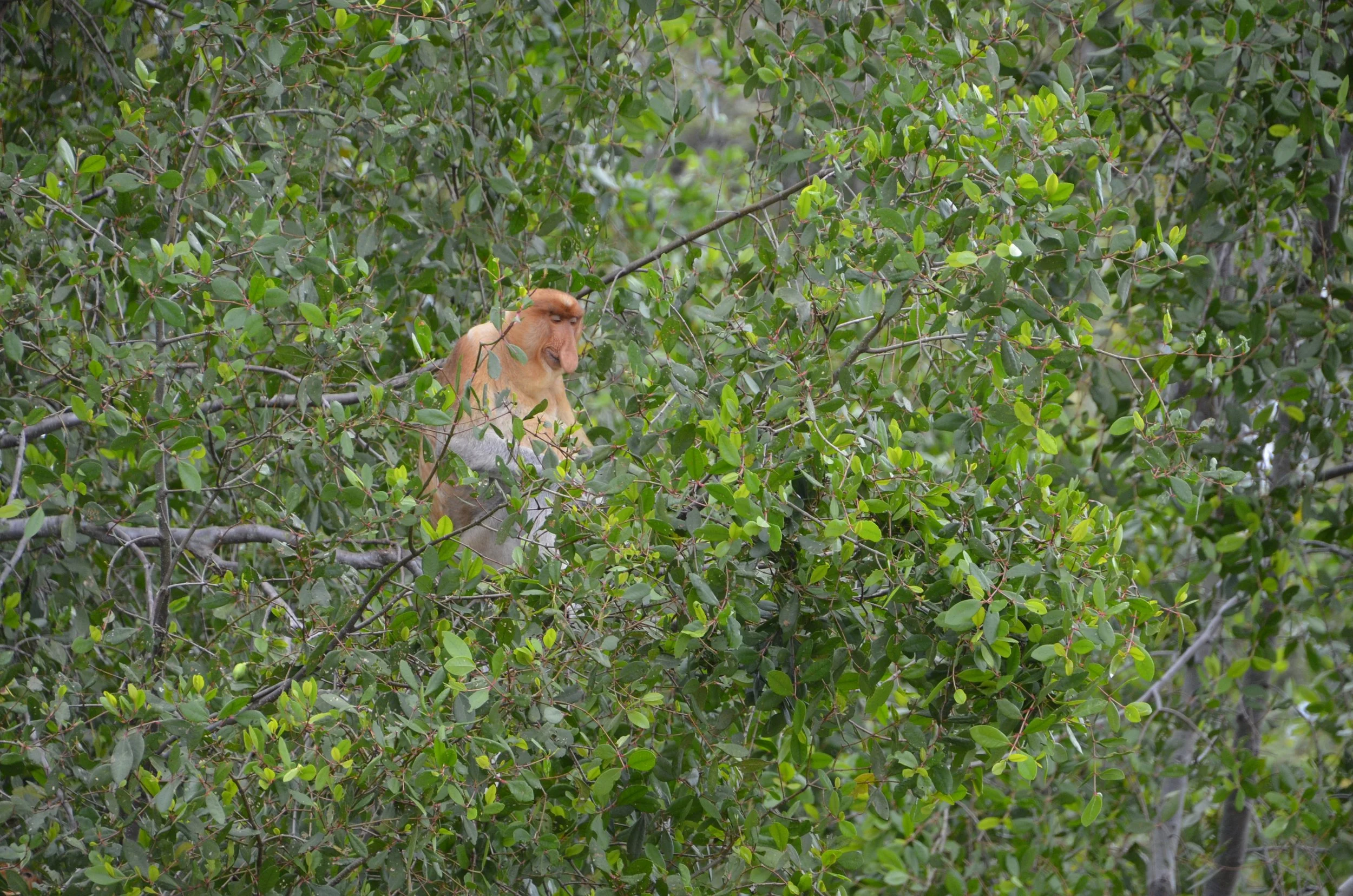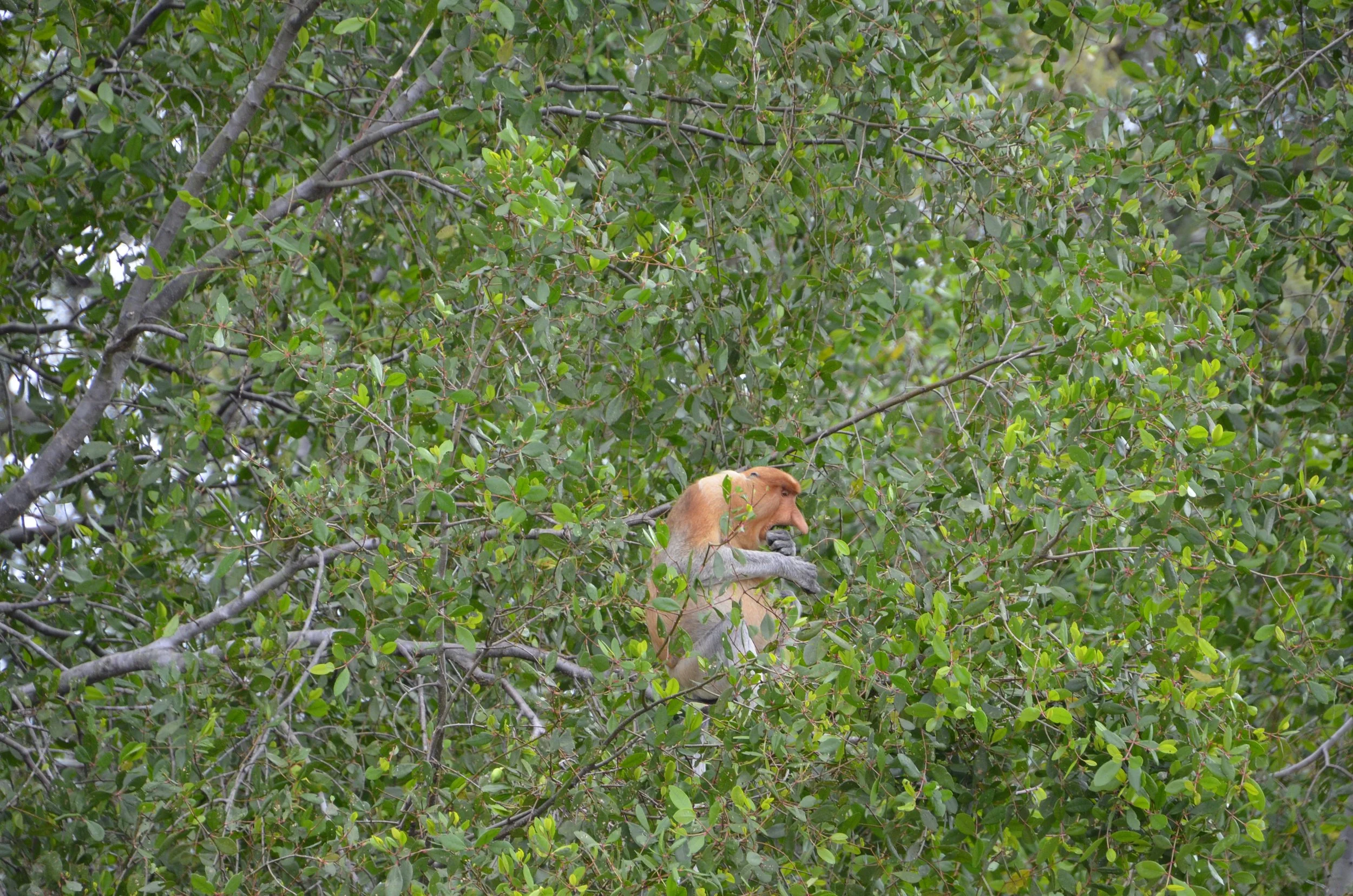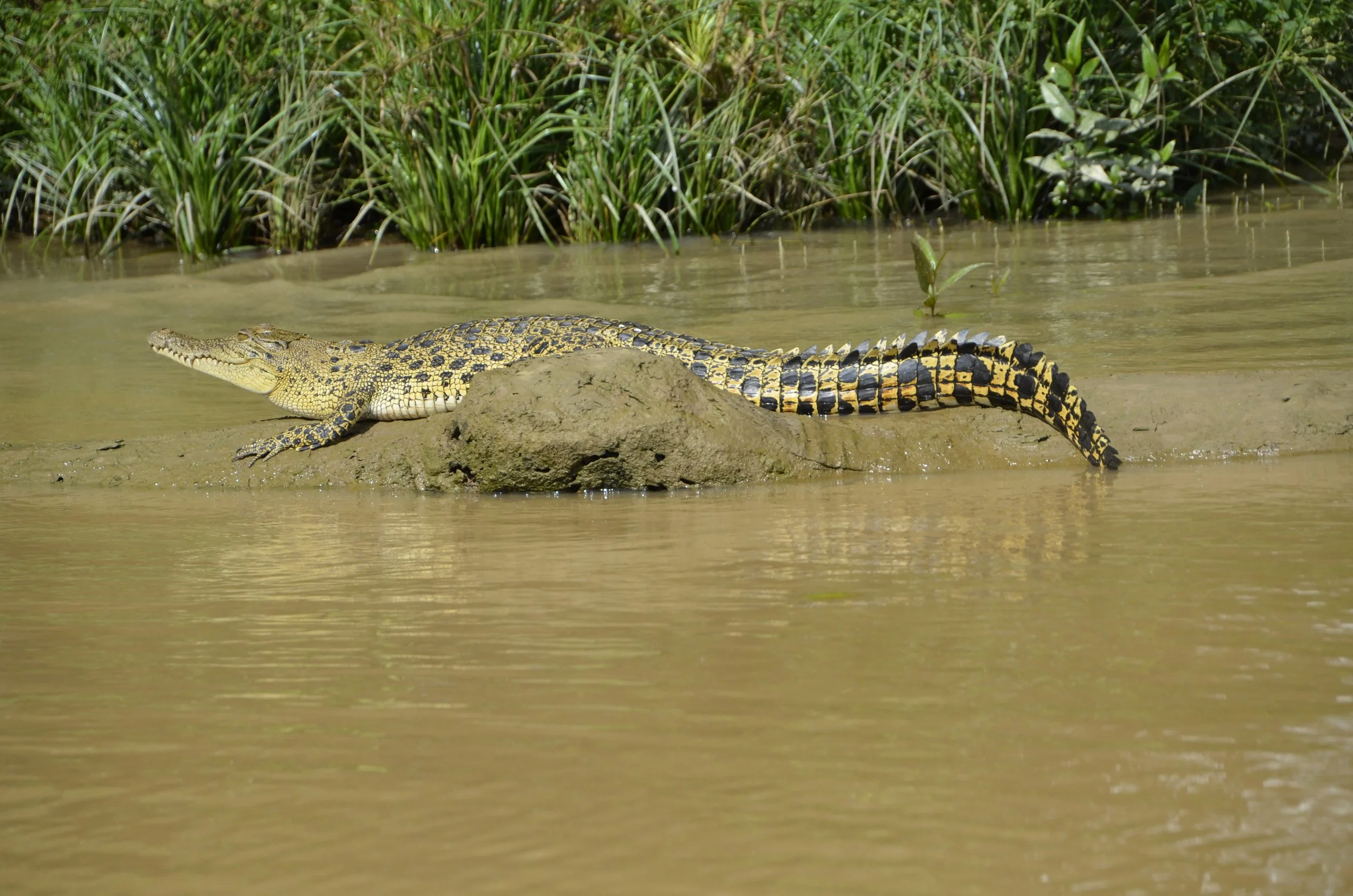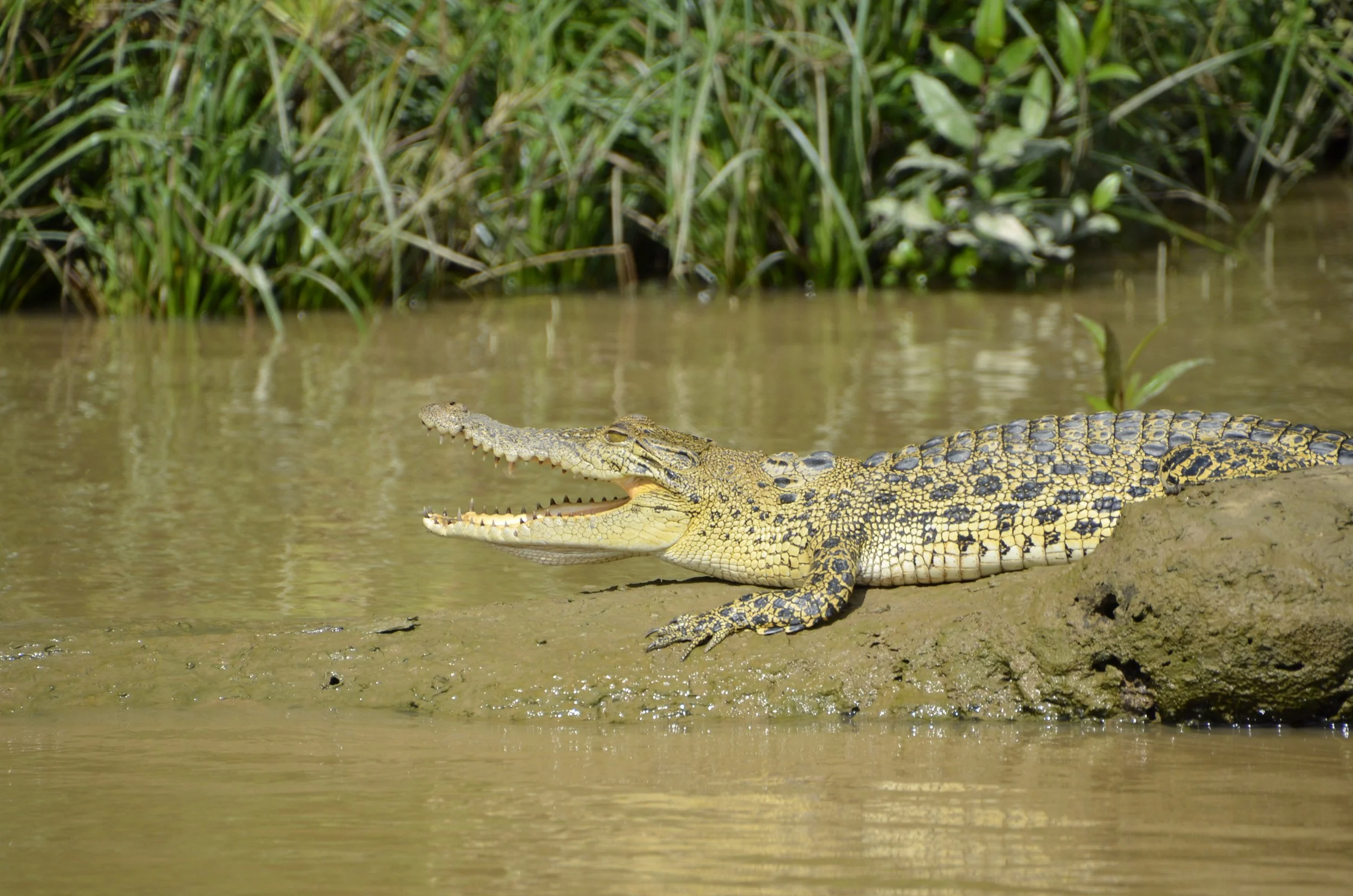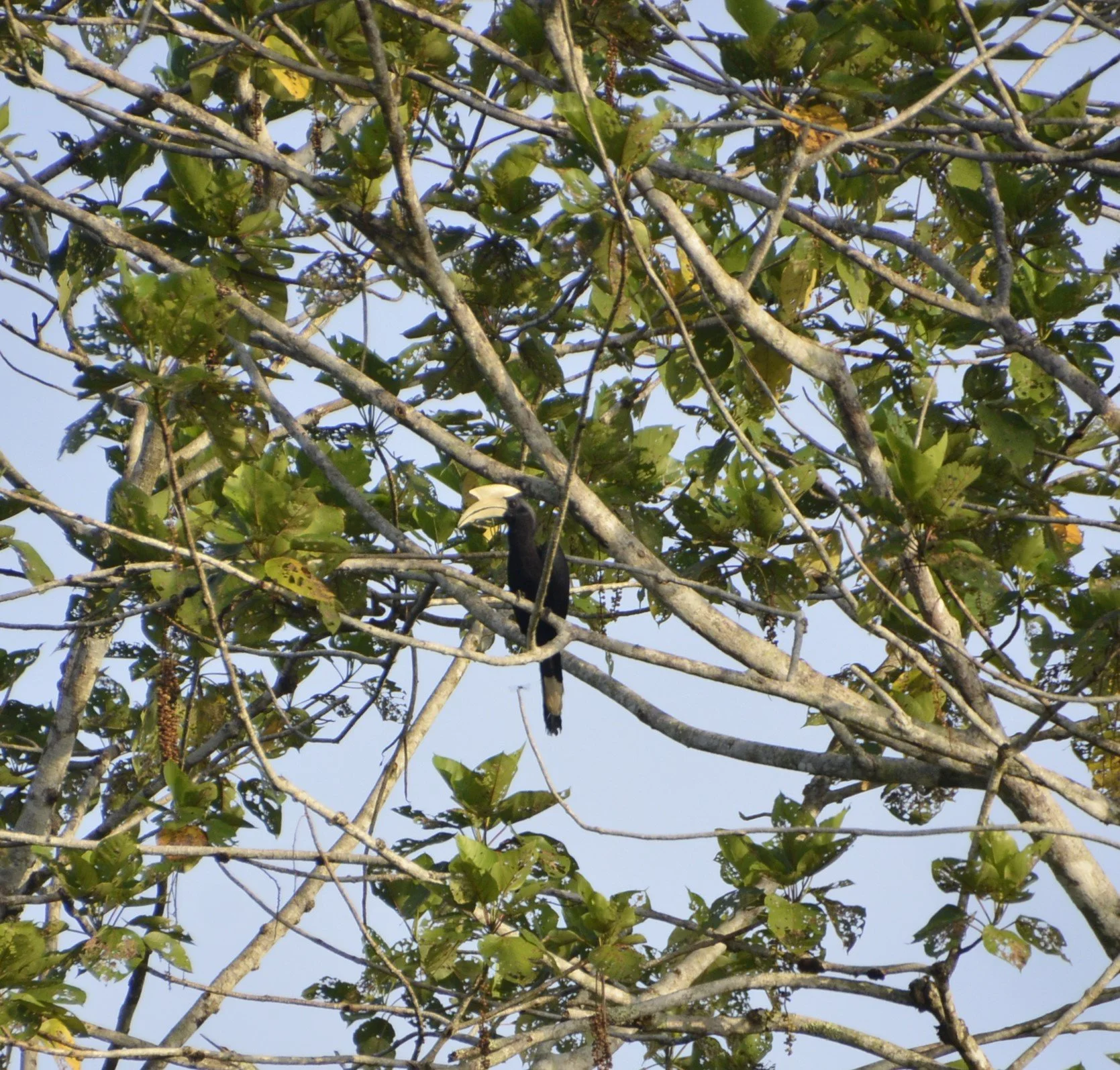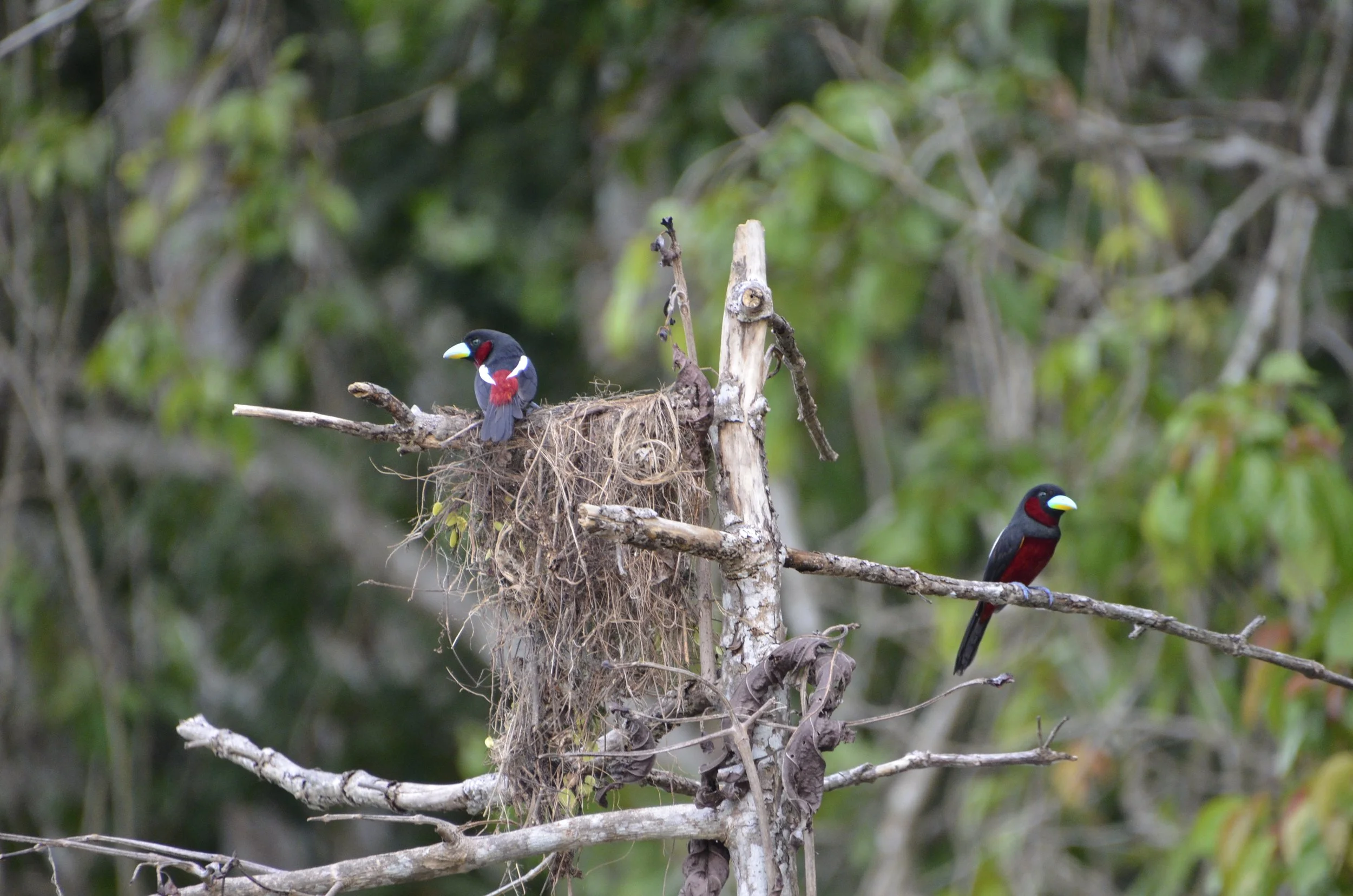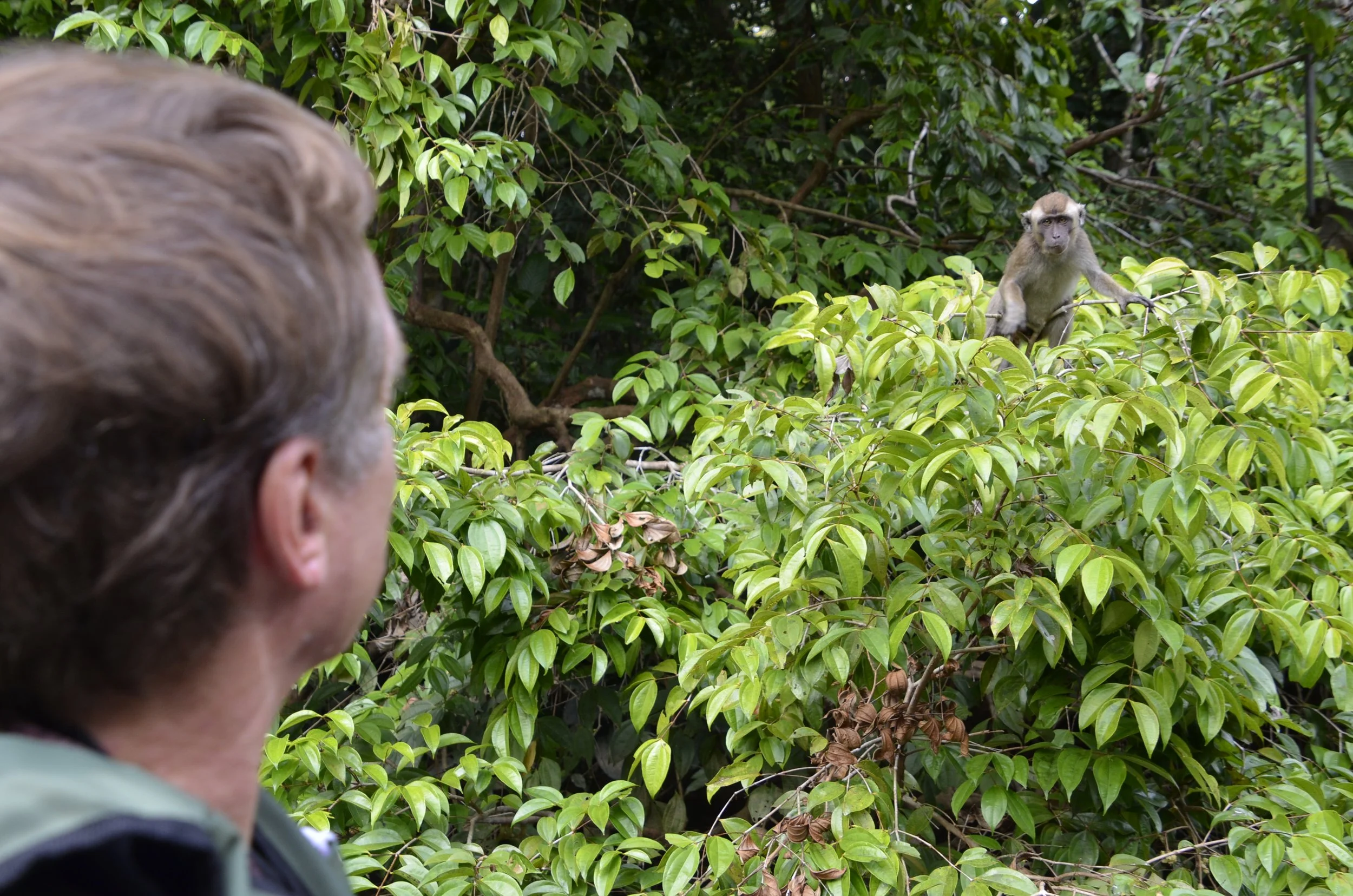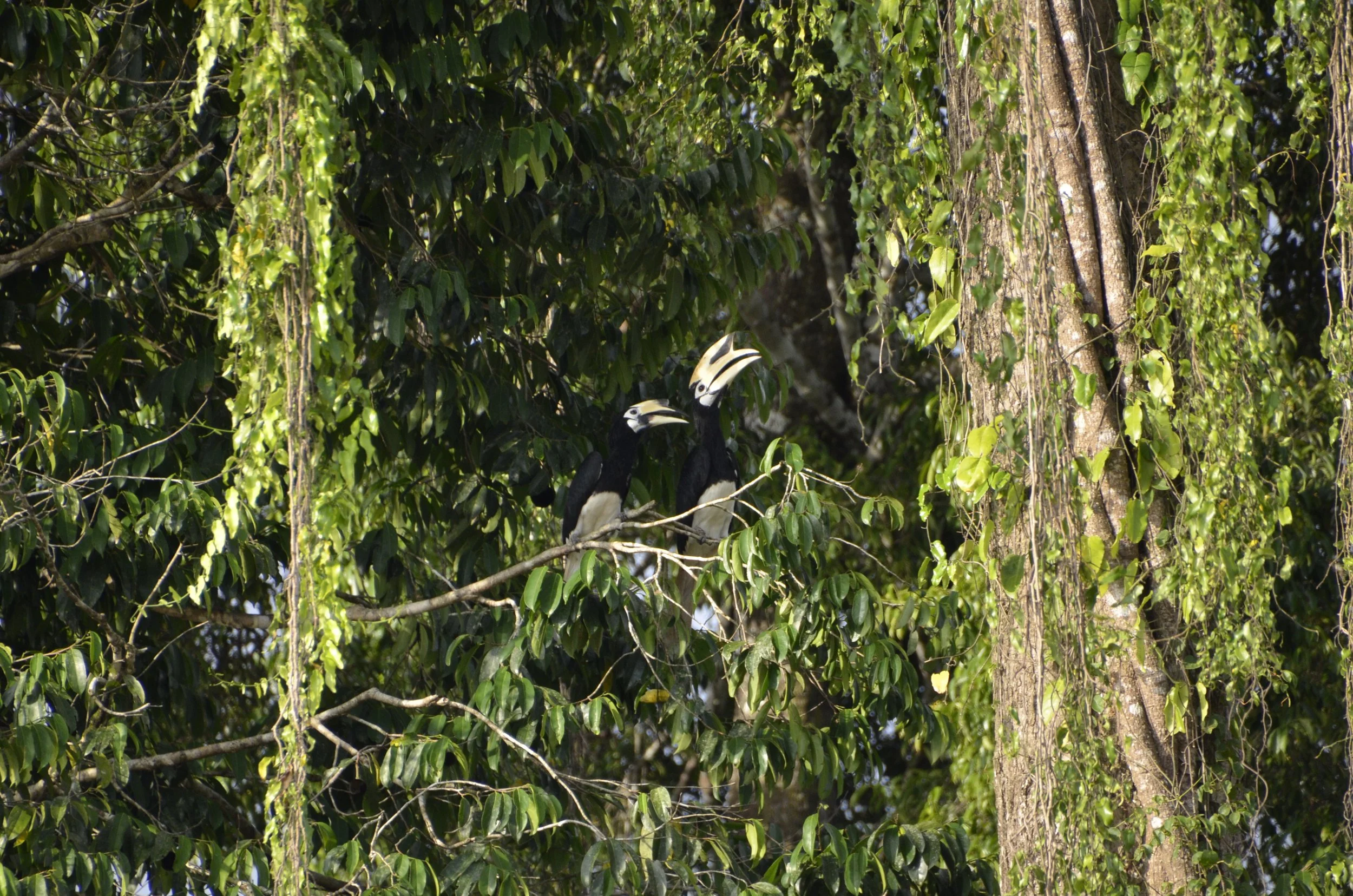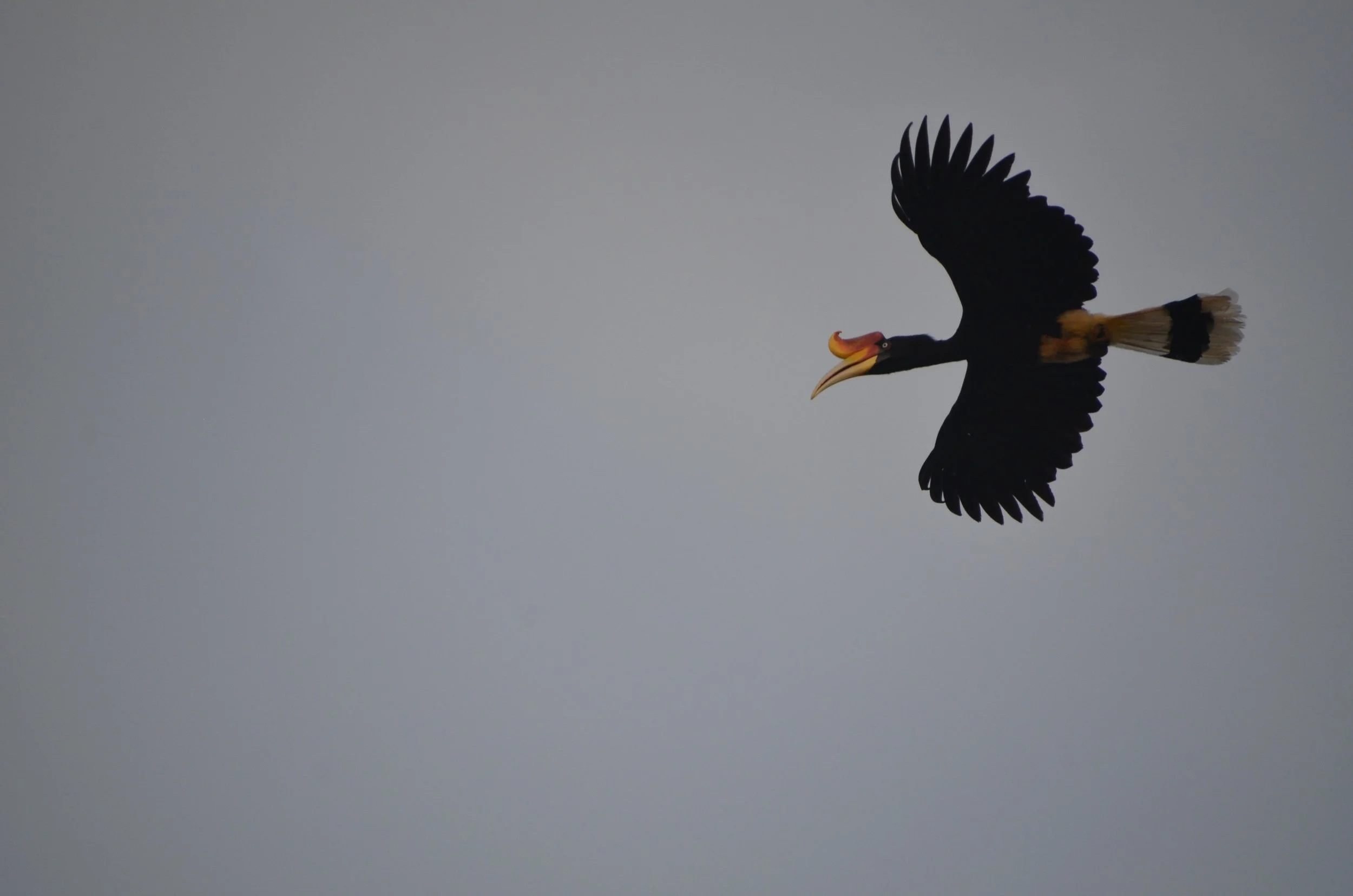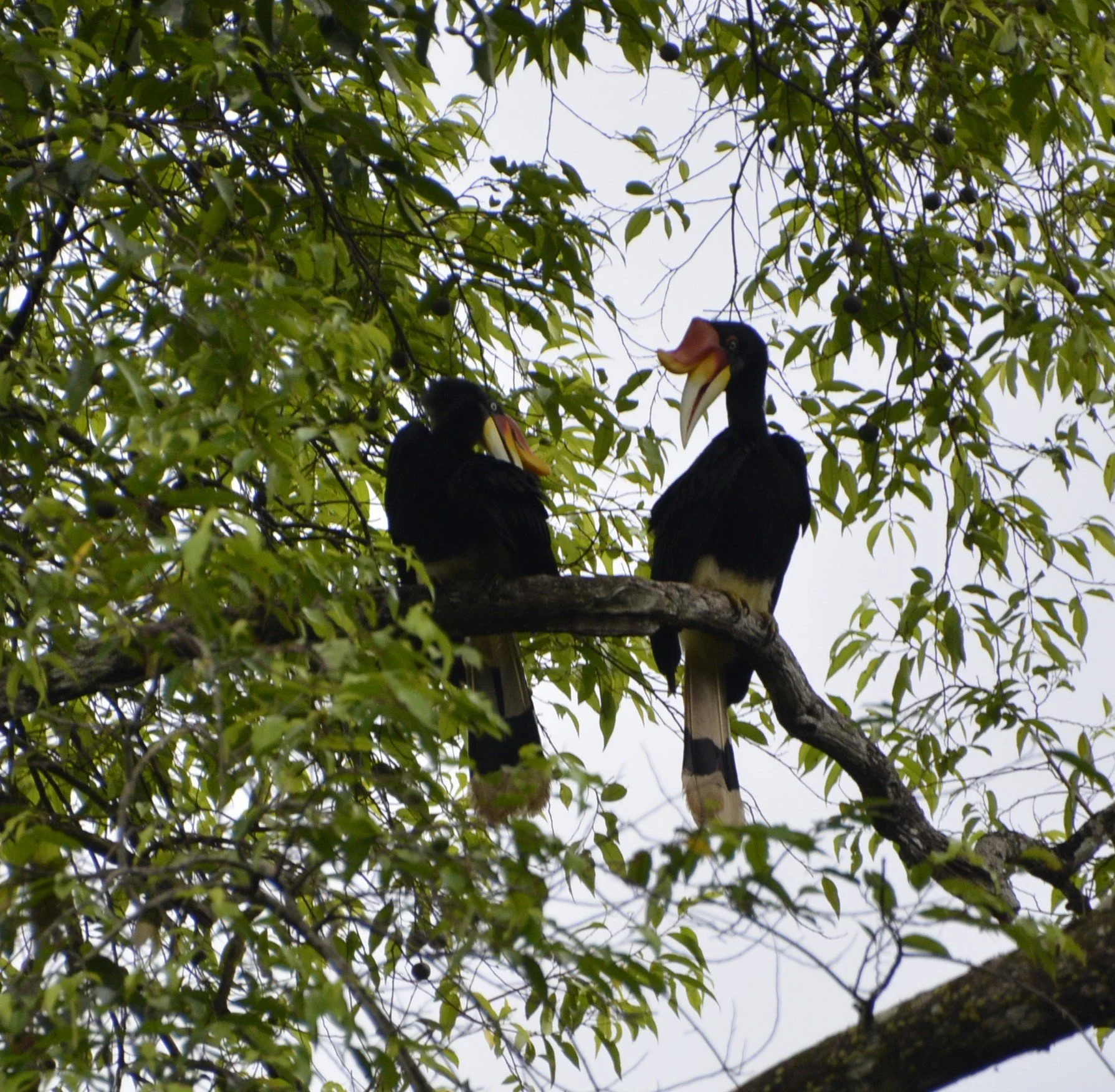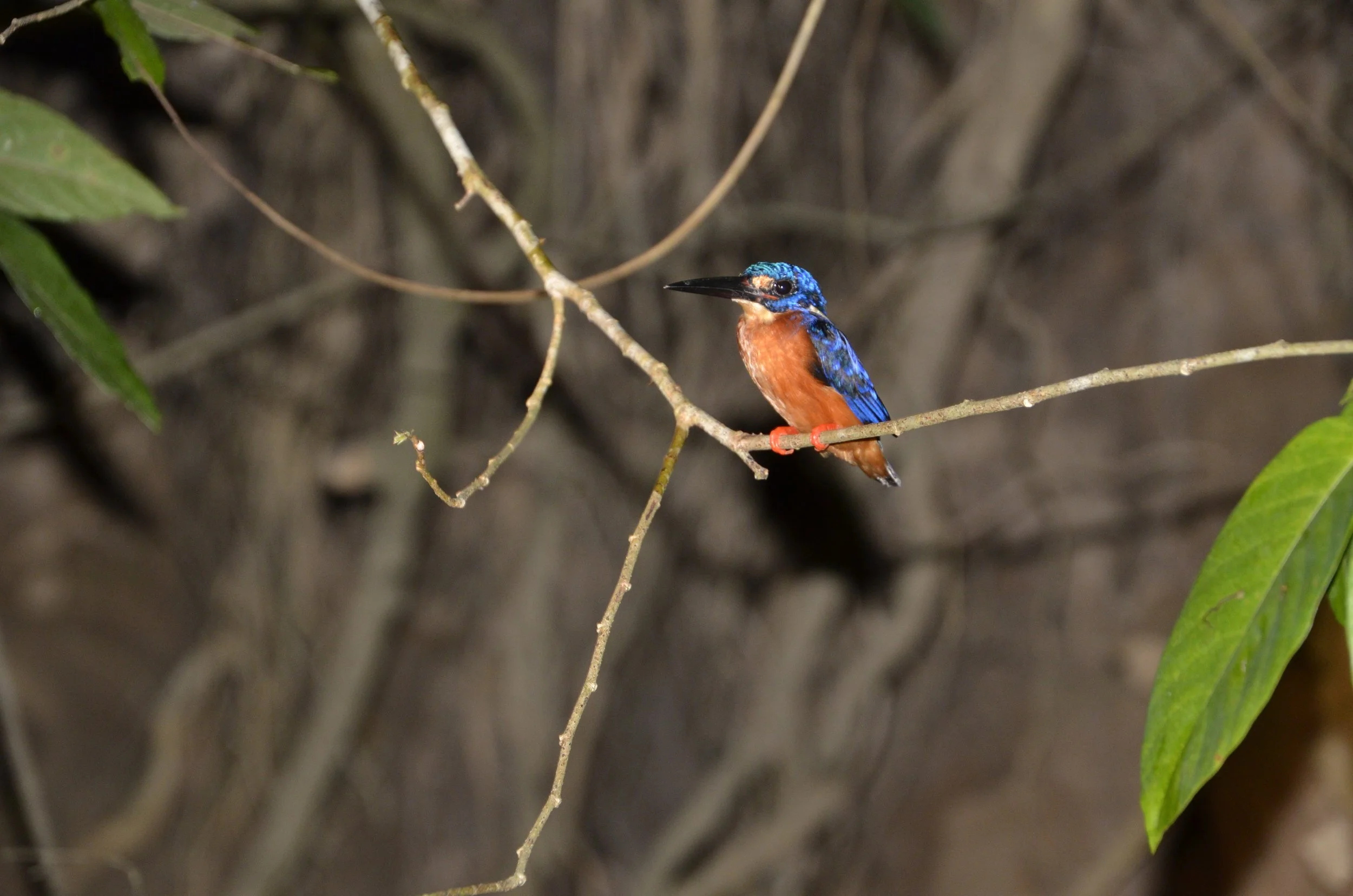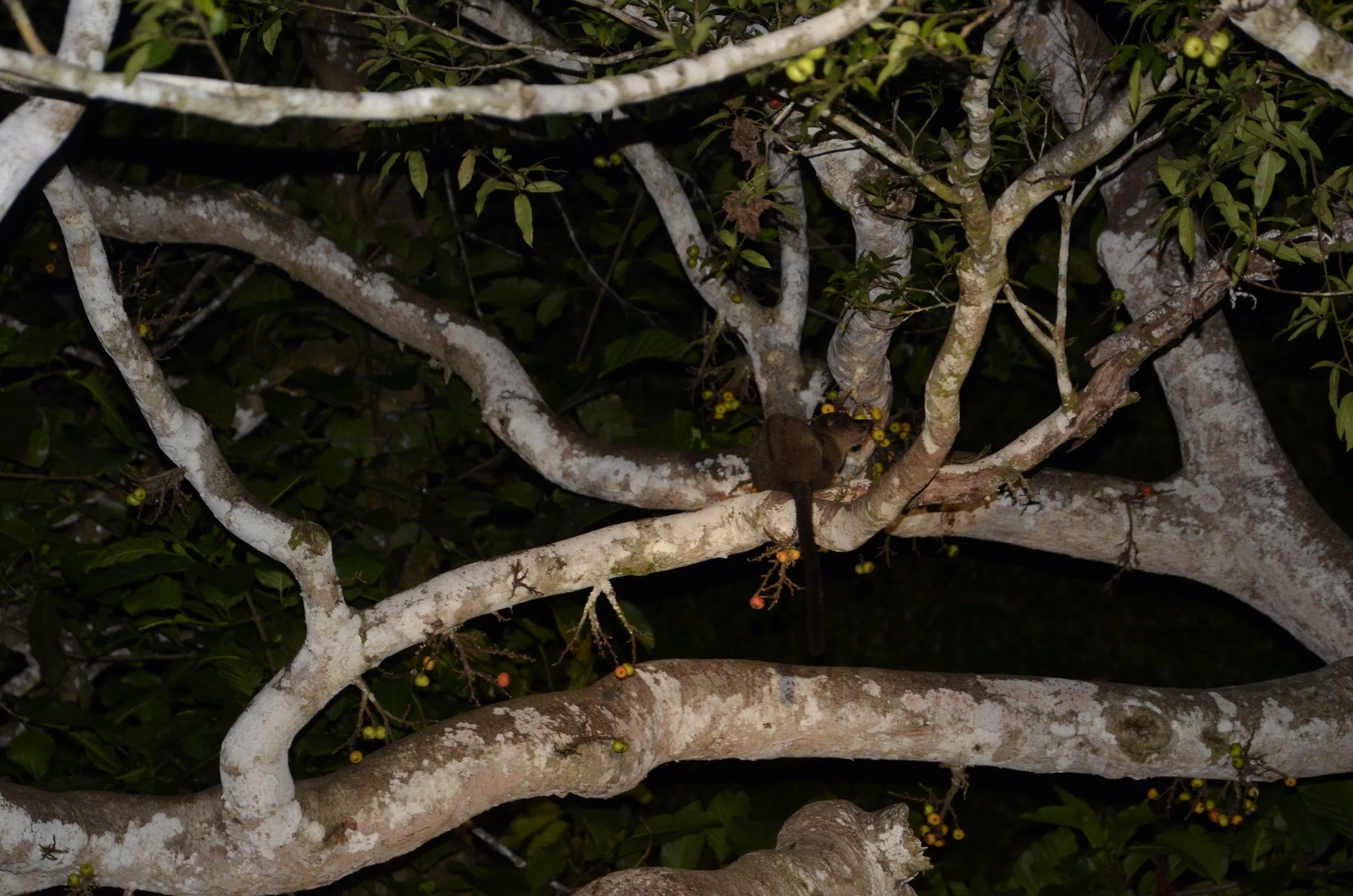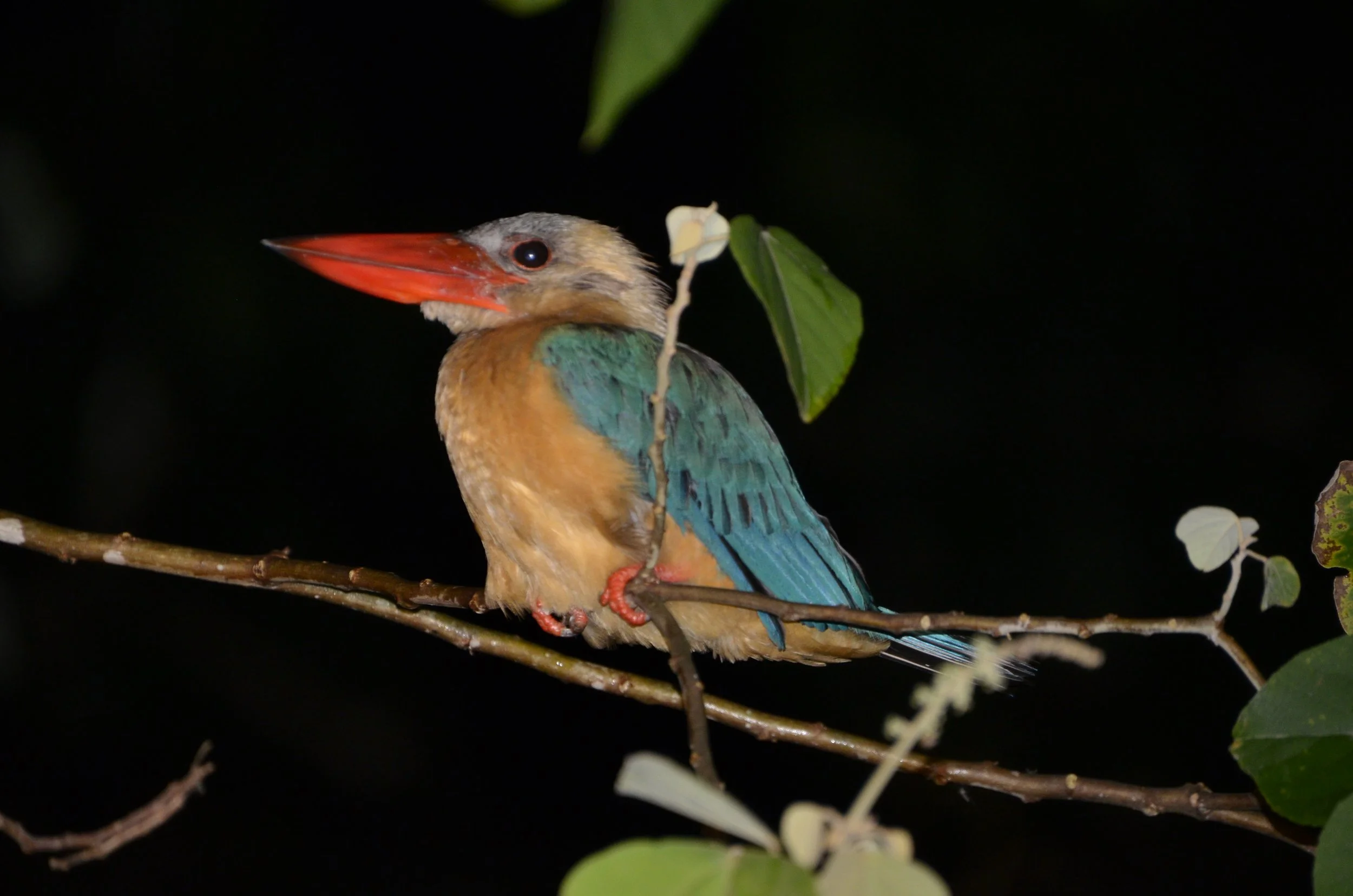Kinabatangan River
Before we left the Sandakan area (where the rehabilitation centers are), we were treated to one last wild Orangutan encounter -
(be sure and enlarge it for detail)
We stayed 4 nights at the Sakau Rainforest Lodge on the above named river, and can highly recommend Borneo Eco Tours as an operator. For those of you who have been following me for a long time, you know I ‘never’ highlight accommodations or tours we’ve done, because that’s not what this blog is about. I’m making an exception here, because that operator was top notch, and the wildlife spotting was really good. If you can afford it, get a private guide, so you don’t have to share a boat with 6 or 8 other people.
It was a 2 1/2 hr boat ride to the lodge, and on the way, we saw two more of the “Big 5” of Borneo -
That is a young male Proboscis monkey. The Alpha male has a much larger nose, but he wasn’t out and posing as well -
(I did like his apparent grin)
They looked like they were wearing long fuzzy opera gloves.
This Estuarine Crocodile was posing nicely…
… but didn’t move a muscle for so long, that we joked with the boat crew that it was a plastic model that they planted there for tourists. So the croc obliged us -
Obviously, we had seen Orangutans, as members of the Big 5, and later in our visit, we were to see the remainder - Rhinoceros Hornbill and Pygmy Elephants.
Many times I was glad I had my long lens, as the wildlife was fairly far away and hidden in trees. We were only to see this Silvered Langur twice in our whole time in Borneo -
(you’ll want to enlarge this picture to see more detail)
They are often referred to as the “golden monkey”, because babies have bright orange fur for several months after birth. Sadly, we didn’t get to see a baby.
We were to see sunrise every morning on the river…
… because it’s cooler, and the animals and birds are more active. I’ll try not to bore you with too many birds, but I definitely want to share the hornbills that we saw…
Asian Black Hornbill
… and the more colorful ones, like these Black-and-red Broadbills at their nest -
We had a close encounter with some Long-tailed Macaques…
… that our guide called ‘cheeky monkeys’.
Another Hornbill is the Oriental Pied, and hopefully you can see the difference between a female (L) and male (R) -
Now, the grandest of them all, the Rhinoceros Hornbill, is the national bird of Malaysia -
That one flew right over us one morning, and you can tell it’s a female because of the red ring around the eye.
Even though it’s not the best pose for the camera, hopefully you can see the dark line on the horn of the male on the left, and the red eye ring on the female -
And this guy was rightly proud to pose -
I’m finding it hard to tell a story, when I look through my picture folders and find tons of bird pictures (that I think are beautiful, and I know how hard it was to photograph some of them), but I can almost feel you shudder at the thought of more birds.
I captured that Blue-eared Kingfisher on a night boat ride. The “captain” steering the outboard motor also had a strong spotlight, and when he spied something along the riverbank, we’d pull up for a closer look. The birds at night were essentially frozen on their perches, so I was easily able to photograph them in their full-color glory.
This Palm Civet was much more active and elusive -
(you’ll want to enlarge the pic for more detail - I didn’t want to crop it because it’s a little fuzzy)
This Stork-billed Kingfisher just wanted to be left alone, probably like you by now, so bye-bye!
